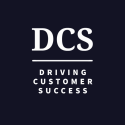Data-Driven Techniques to Optimize Customer Experiences and Build Loyalty
“Armed with data analytics and a curious mind, anyone on your customer success teams can get the answers they need to identify the crucial trends and opportunities to succeed”
The pandemic really shook up the retail sector. Retailers were suddenly either essential or nonessential, and those that remained open had to learn new skills such as social distancing, BOPIS, curbside pickup and mask guidelines. Etail sales in some categories boomed, while retailers also had to acquire new skills such as mastering hybrid shopping and implementing new procedures for product returns. Meanwhile, disrupted supply chains and random surges in demand for certain items led to frustrating product shortages.
So perhaps it’s not surprising that customer loyalty took a hit during the pandemic. A recent McKinsey report found that consumers expanded their sampling of new brands and new digital shopping methods. Of the three-quarters of Americans whose shopping behavior changed during COVID-19 began, approximately 40 percent say they have changed brands, with the level of brand switching doubling in 2020 compared to 2019.

As consumer spending rebounds and you plan your marketing spend for the second half of 2021, think of ways to deliver a more consistent customer experience across your various customer touch points. Data analytics can help shape your tactics. Ecommerce analytics aren’t limited to providing intel on where your customers are coming from or their browsing habits; there are many other practical ways to apply insights. You can also track which customers are returning to your store and why, their geographical location, what device they are using, how far they scroll down your product pages and which products they linger on the most.
Better still, the latest generation of natural language analytics places the potential for deep insights at the fingertips of non-technical teams. Leveraging this information is how you build a better picture of your customers and how they engage with offerings. These insights can indicate what techniques you should deploy to convert browsers into buyers.
Personalize customer recommendations: A product recommendations feature is a proven way to spike consumers’ interest in products while they are in browsing or buying mode. Personalizing these product suggestions is crucial, so use shopper analytics to understand product purchase correlations among your customer base to make more targeted recommendations for shoppers with similar attributes.
Apply real-time data to define new offers: Offers and promotions are a feature of most shopper journeys, but without data analytics these tend to be more seasonal or time-bound. With real-time analytics, you can design customer offers based on insights into real customer needs or an emerging current trend. Some of the most effective offers are those that appeal to an in-the-moment consumer decision. For example, U.K. retailer ASOS applies its ‘selling fast’ feature during a shopping session. An alert pops up to promote a relevant product that is currently in high demand—urging the shopper to act quickly. Similarly, using inventory analytics to make “Hurry–only three left!” offers cater to basic FOMO emotions that can motivate a purchase.
Identify trends as they are taking shape: A great application for analytics is to identify emerging trends. But rather than depend on dashboards and alerts, the latest natural language analytics systems help you quickly identify trends, so you can explore a hunch or intuition. Asking the right questions is key—for example, a clothing retailer could identify an uptick in searches for business casual outfits associated with office reopenings and then personalize offers to specific customer segments.
Be empathetic: Customers like to feel someone is looking out for them, so look for current patterns that may be shaping customer needs. For example, during the pandemic, Shopify analyzed customer data and discovered an uptick in small businesses that had been forced to shut down and reinvent themselves online. To help them weather the storm, Shopify created and launched several tools to assist small businesses, such as tips to offer gift cards to provide much-needed revenue.
Being a Data Analyst is Everyone’s Job
Until recently, gaining access to these sorts of insights has been expensive and time-consuming. The good news is that asking questions about your data to uncover insights is as easy to use as a search engine. Platforms such as Veezoo plug into your databases so you can extract real-time data analytics and get the insights you need by asking ‘regular’ questions, such as “which customers last month bought more than three items.” Armed with data analytics and a curious mind, anyone on your marketing, growth and customer success teams can get the answers they need to identify the crucial trends and opportunities to succeed as business ramps back up this year. – Marcos Monteiro, co-founder and CEO of Veezoo.

Hakan Ozturk
Founder, theCScafe.com, #1 Weekly Customer Success Newsletter
Hakan Ozturk is a Paris-based Customer Success leader with over 15 years of experience in the computer software industry. Passionate about driving growth and delivering value to strategic customers, Hakan has established himself as a trusted industry expert. As the Founder of The Customer Success Café Newsletter and TopCSjobs.com, Hakan provides valuable industry insights and daily-updated job opportunities worldwide in the field of Customer Success. Connect with Hakan to boost your career in CS and your company’s potential for massive growth.

Leave a Reply